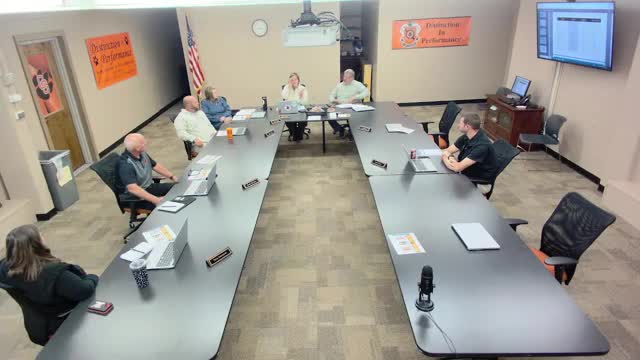Education Officials Warn of Funding Crisis Ahead
October 16, 2024 | OAK GROVE R-VI, School Districts, Missouri
This article was created by AI summarizing key points discussed. AI makes mistakes, so for full details and context, please refer to the video of the full meeting. Please report any errors so we can fix them. Report an error »

In a recent government meeting, education officials expressed concerns regarding the implications of Amendment 2 on school funding. They clarified that the amendment does not guarantee new financial resources for schools but rather suggests a reallocation of existing funds. This has raised apprehensions among community members who may mistakenly believe that their support for the amendment will directly benefit local schools.
The discussion highlighted a significant shift in funding sources over the past 27 years, with state funding for education declining from 55% to a mere 35%, while local funding has increased. This trend has created a challenging environment for school districts, which are now more reliant on local revenue. Last year alone, one district reported a loss of $800,000 in anticipated local revenue, exacerbating their financial struggles.
Officials emphasized the need for improved communication with the public to clarify the realities of school funding. They noted that state payments are not received until late in the year, creating cash flow issues during the summer and early fall months. As reserves dwindle, districts face the possibility of insufficient funds to meet payroll obligations.
The meeting underscored the urgency for school leaders to advocate for increased local support while navigating the complexities of state funding policies. As districts prepare to engage with their communities, the message remains clear: understanding the intricacies of school finance is crucial for securing the necessary resources to sustain educational programs.
The discussion highlighted a significant shift in funding sources over the past 27 years, with state funding for education declining from 55% to a mere 35%, while local funding has increased. This trend has created a challenging environment for school districts, which are now more reliant on local revenue. Last year alone, one district reported a loss of $800,000 in anticipated local revenue, exacerbating their financial struggles.
Officials emphasized the need for improved communication with the public to clarify the realities of school funding. They noted that state payments are not received until late in the year, creating cash flow issues during the summer and early fall months. As reserves dwindle, districts face the possibility of insufficient funds to meet payroll obligations.
The meeting underscored the urgency for school leaders to advocate for increased local support while navigating the complexities of state funding policies. As districts prepare to engage with their communities, the message remains clear: understanding the intricacies of school finance is crucial for securing the necessary resources to sustain educational programs.
View full meeting
This article is based on a recent meeting—watch the full video and explore the complete transcript for deeper insights into the discussion.
View full meeting
